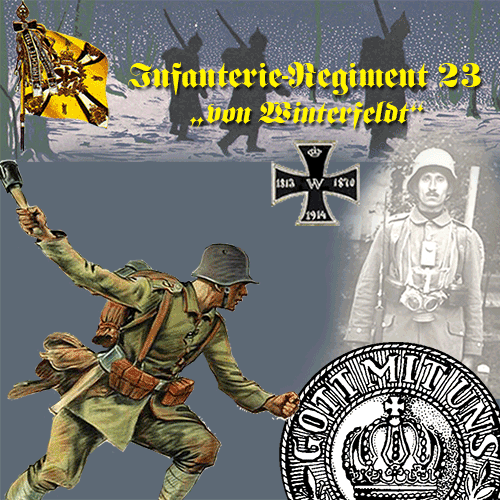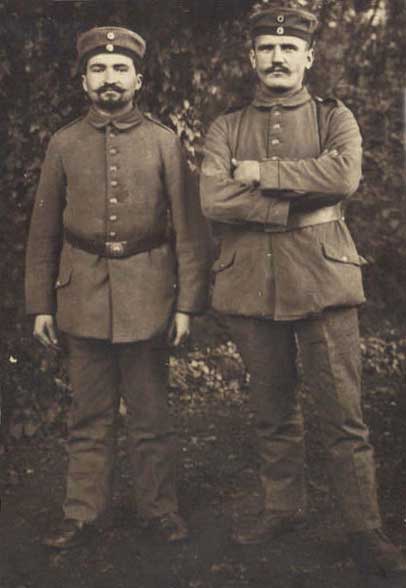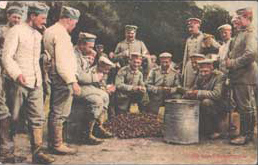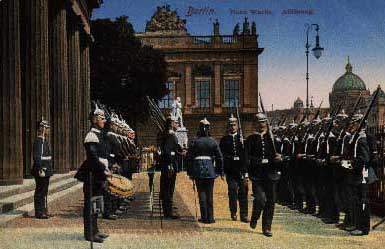


to the official web site of
Infanterieregiment „von Winterfeldt“
(2.Oberschlesisches) Nr.23
Infanterieregiment „von Winterfeldt“
(2.Oberschlesisches) Nr.23
|
This website is dedicated to the memories of our lost Kameraden:
|
1./Infanterieregiment Nr. 23 (J.R. 23) is a unit reborn from the ashes. Having went away from the GWA in the first years of the 21st century, J.R. 23 was reborn in the GWA in 2006.
 Who We Are
Who We Are
J.R. 23 is a reenacting and living history organization dedicated to learning about life on the Western Front during the First World War. We do this through what we call "experimental archeology." Our goal is to portray typical German infantrymen of the Great War, not only by accurately recreating his appearance, but also by researching and demonstrating his life, duties and occasional pastimes as he experienced them at and near the front. This portrayal may sometimes be seen by the public at special events, but it is best understood and fully appreciated by unit members themselves. This is part of what we call "living history"--the assimilation of historical knowledge by experiencing it firsthand for oneself.
The Historical Impression
There are three main facets to a historical impression (termed the "3M's" by Erich Tobey), and they all are of equal importance: Man, Minutiae, and Methods. When we get too far advanced in one area, we stop and improve on the other two. Man refers to the person inside the uniform--without knowing something about the German man, you can't portray a German Soldier convincingly. In this category, we include things like German culture, personal appearance, language, and mannerisms. Minutiae is all the "stuff" related to the soldier: uniforms, equipment, personal effects, etc. A very obvious and therefore important aspect, but by no means any more important than either of the other two. Methods are the ways in which the man used his minutiae. This includes drill, combat techniques, camp chores, unit organization, etc.
The Primary Requirements of this Hobby
 The primary requirements for participation in this hobby are a genuine interest in the history of the period, a willingness and patience to work on the impression, and above all a commitment to historical accuracy. Although our impression can be one of the most difficult in WWI living history to do correctly, a person who has the above traits can always count on the help of our other members to develop a first-rate impression.
The primary requirements for participation in this hobby are a genuine interest in the history of the period, a willingness and patience to work on the impression, and above all a commitment to historical accuracy. Although our impression can be one of the most difficult in WWI living history to do correctly, a person who has the above traits can always count on the help of our other members to develop a first-rate impression.
Like all select brotherhoods, J.R. 23 insists on the highest standards from its membership. To be counted as a "Landsmann" and brother in J.R. 23, one must strive for excellence and believe in Kameradschaft (comradeship). By nature members of J.R. 23, must be mature and willing to work side by side with their brothers as part of a team. Together, we can achieve that which is beyond us as mere individuals. It is just this spirit of fellowship that binds each member to his "Brothers-in-Arms" and allows him to fully understand the meaning of the term Kameradschaft.

About the Original Winterfeldt Regiment

The Winterfeldt Regiment was from the city of Neiße, (today Nysa, in Poland) in the Prussian province of Upper Silesia. Neisse was known as both a fortress town and a center of learning and study during the Counter-Reformation. The regiment had a long history, being one of the new “Landwehr” or volunteer units of the “New Prussian Army” raised to fight Napoleon Bonaparte in 1813.
![]() Fighting in the Napoleonic Wars, or the War of Liberation, and then in the Danish war of 1864, the Austro-Prussian war of 1866, the Franco-Prussian war of 1870, and even sending members of the unit on the China-Boxer Rebellion relief expedition, the Soldaten of the Winterfeldt Regiment made important and lasting contributions to their country’s success!
Fighting in the Napoleonic Wars, or the War of Liberation, and then in the Danish war of 1864, the Austro-Prussian war of 1866, the Franco-Prussian war of 1870, and even sending members of the unit on the China-Boxer Rebellion relief expedition, the Soldaten of the Winterfeldt Regiment made important and lasting contributions to their country’s success!
The Prussian Army was very proud of its rich heritage of tradition and service, having been not only an important part of the state, but also of society in the Kaiserzeit and before. Since the days of the campaigns of Frederick the Great, the Prussian army had been known world wide, and its uniforms, drill, ideas, and style were copied on a global scale.
Der Fahneneid
Like all soldiers, Germans swore an oath when they first joined the Army -- view and HEAR their oath, the "Fahneneid!"

